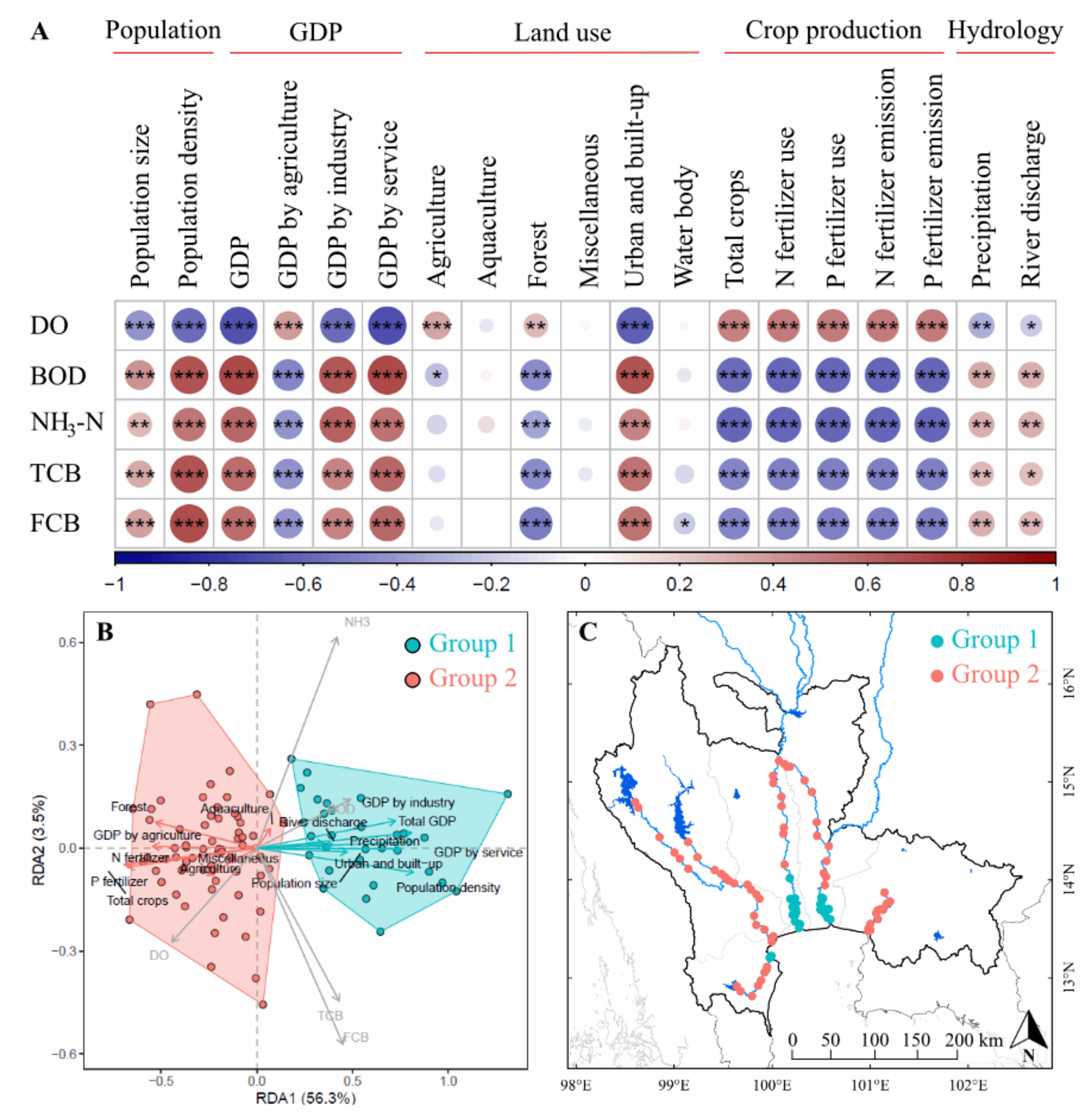
Uthaipan et al. 2025
We investigated the spatiotemporal dynamics of socioeconomic (population, gross domestic product, fertilizer use and emission, and land use) and hydrological factors (precipitation and river discharge) and their relationships with water quality, dissolved oxygen, biochemical oxygen demand, ammonia-nitrogen (NH3-N), and coliform bacteria, across 5 major river basins in Thailand’s Central Plain (2011 to 2018). Our findings reveal that 85% of the deforestation land in this study area was converted to agricultural land, a process that coincided with increased fertilizer use (by 7.7% nitrogen and 9.1% phosphorus) and emission from agricultural runoff (by 7.8% nitrate and 9.3% phosphate). During this period, socioeconomic development, characterized by a 2.8% population increase, 6.1% gross domestic product growth, and 9.4% expansion of built-up areas, was most pronounced in the lower Chao Phraya River basin. Such rapid socioeconomic development is subsequently evident in the lower Tha Chin River basin. The lower reaches of both rivers consequently exhibited severe water quality degradation. These regions exhibited severe dissolved oxygen depletion (<3 mg l−1), higher biochemical oxygen demand (>6 mg l−1), higher NH3-N (>1.3 mg l−1), and higher coliform bacterial levels (total coliform bacteria > 89 × 103 MPN 100 ml−1 and fecal coliform bacteria > 50 × 103 MPN 100 ml−1). Although river discharge overwhelms socioeconomic factors as the primary determinant of the interannual variability in water quality, all water quality parameters showed stronger correlations with socioeconomic factors than with hydrological factors, underscoring the dominant role of local socioeconomic development in shaping the spatial pattern of water quality. These insights can thus inform strategies for sustainable water resource management.
Reference: Khanittha Uthaipan, Zhongwei Yuan, Yangyang Zhao, Wissarut Intararuang, Varintha Vasinamekhin, Chalermrat Sangmanee, Somkiat Khokiattiwong, Minhan Dai. Spatiotemporal Variations in Socioeconomic and Hydrological Factors Impacting Water Quality in Thailand’s Major Rivers. Ecosyst Health Sustain. 2025;11:0345.DOI:10.34133/ehs.0345


